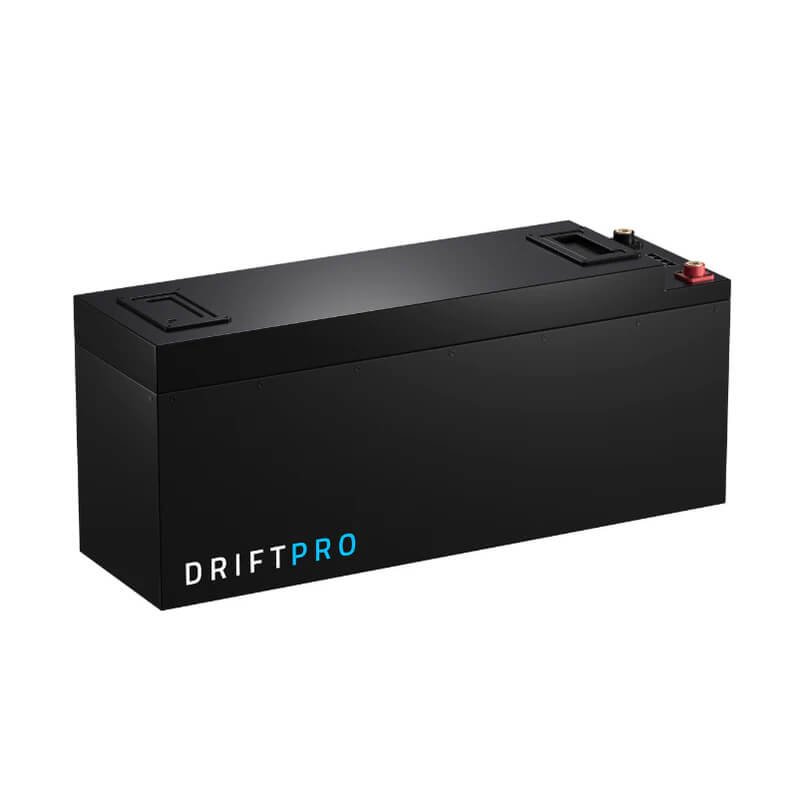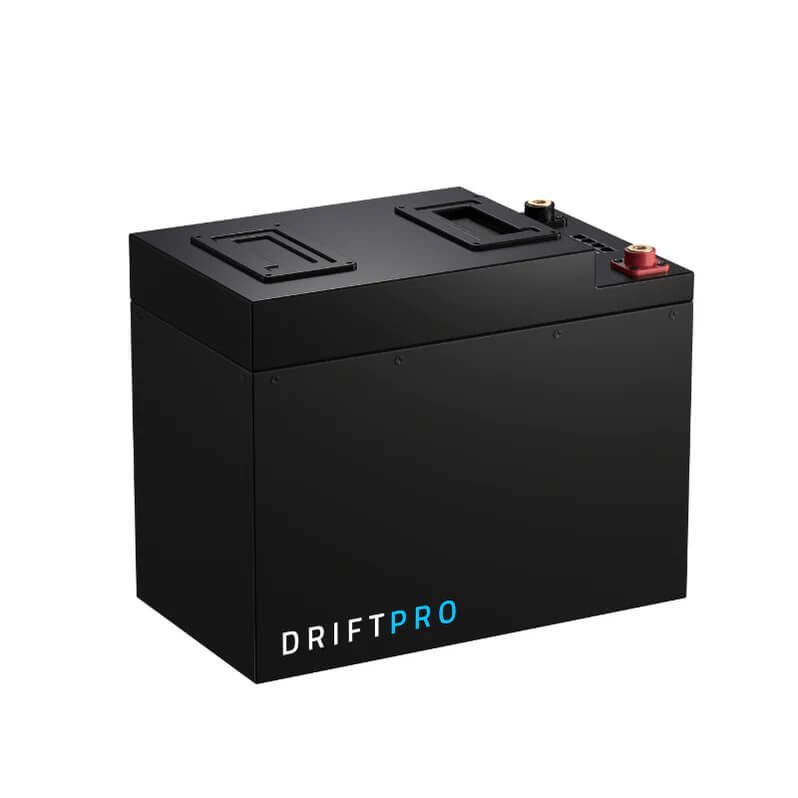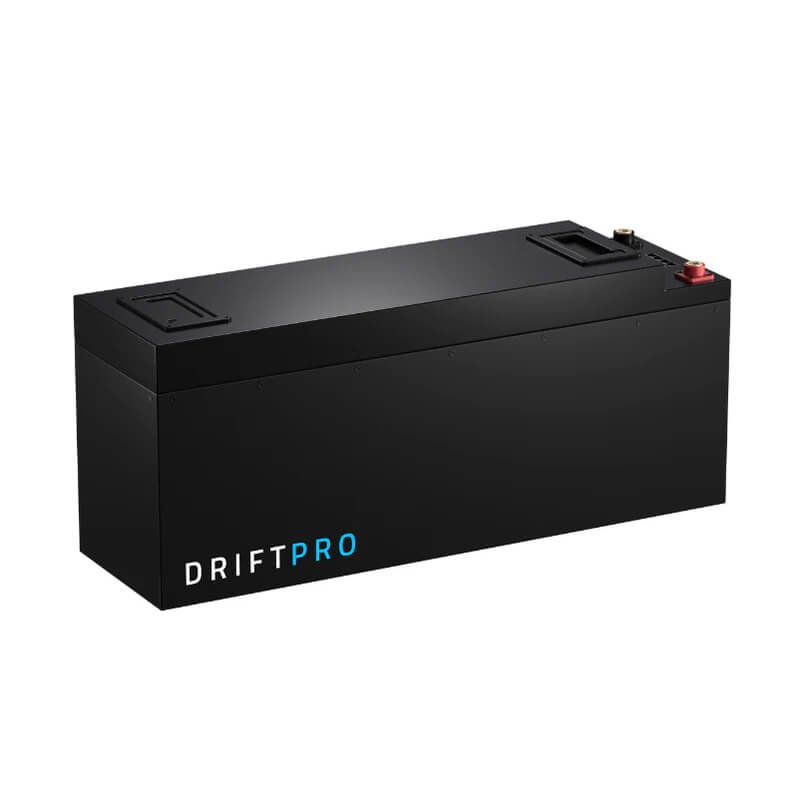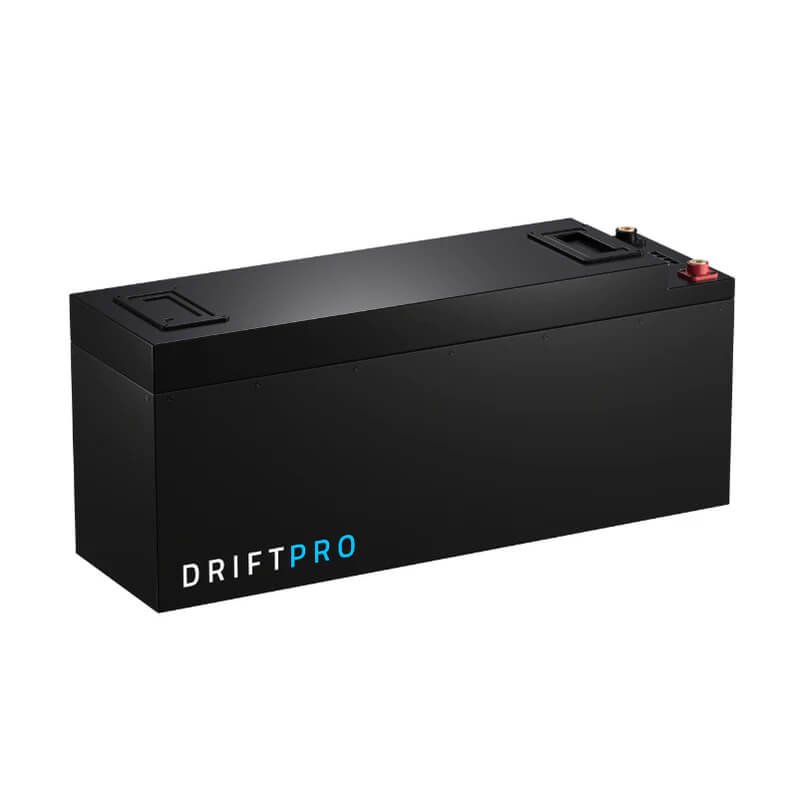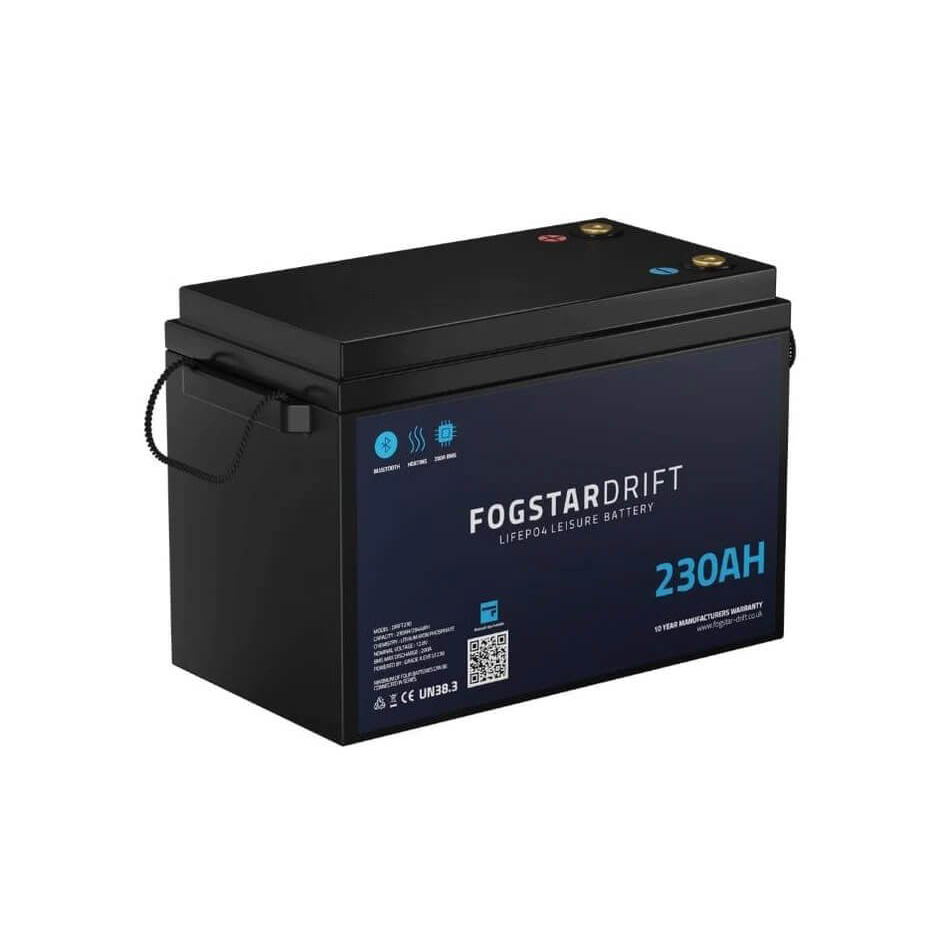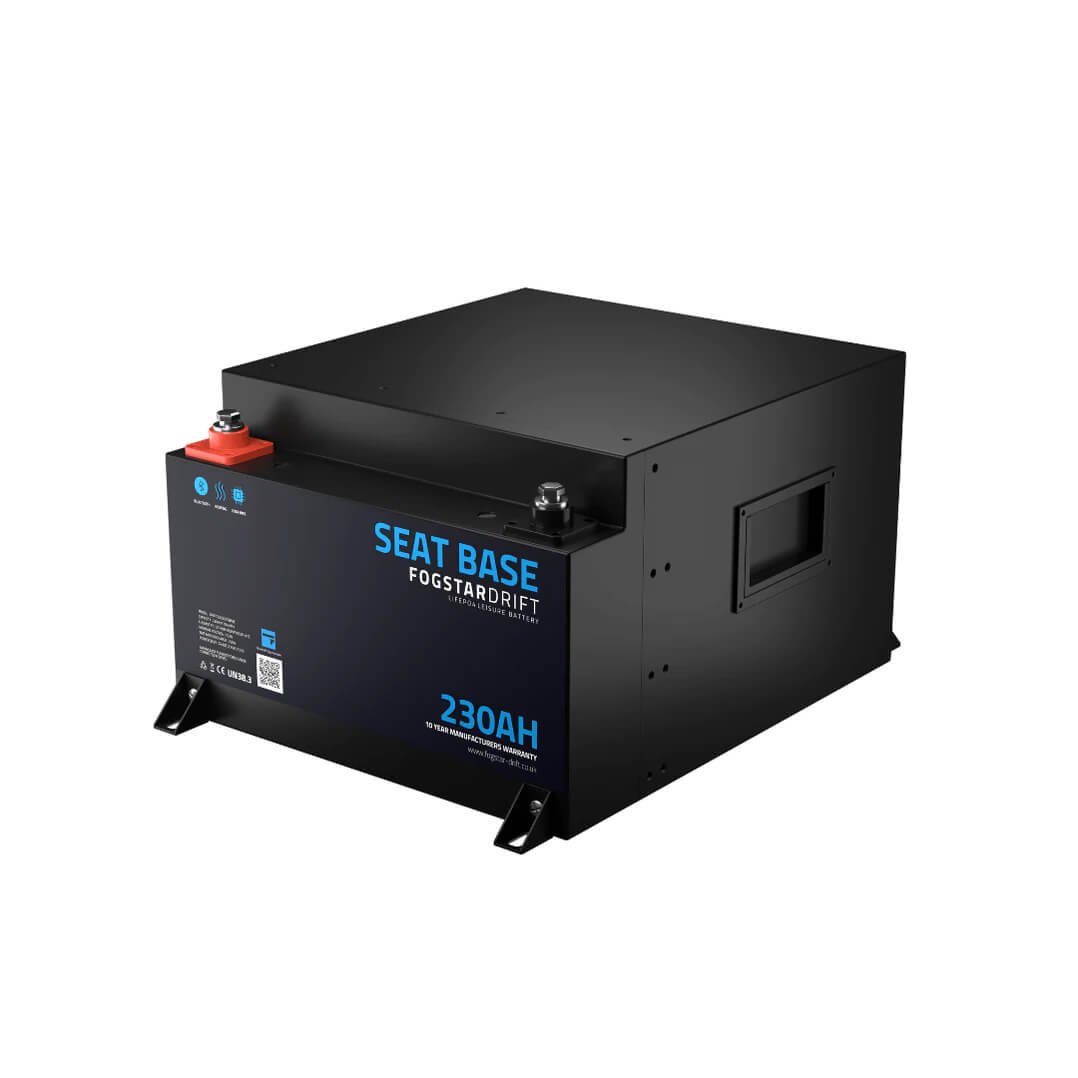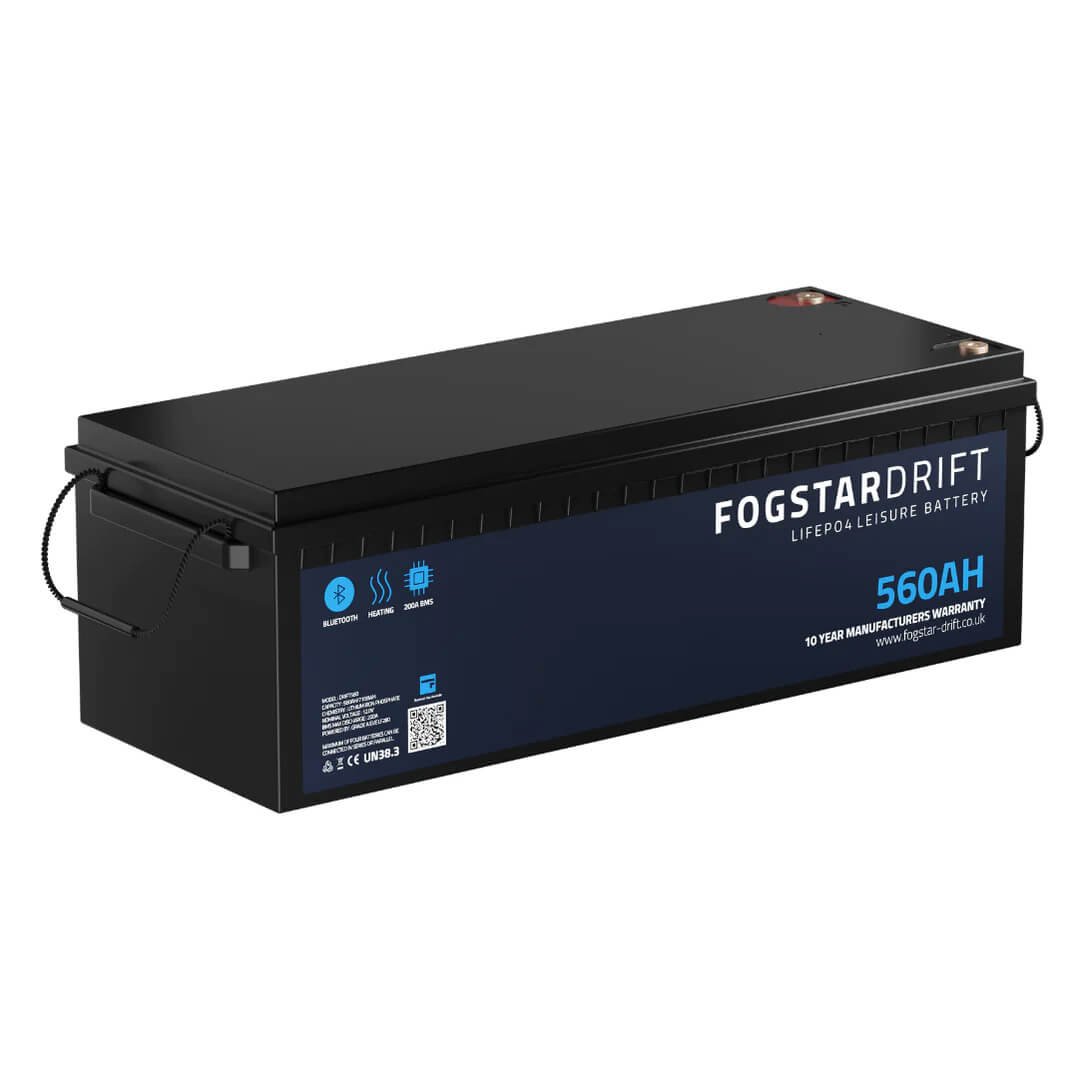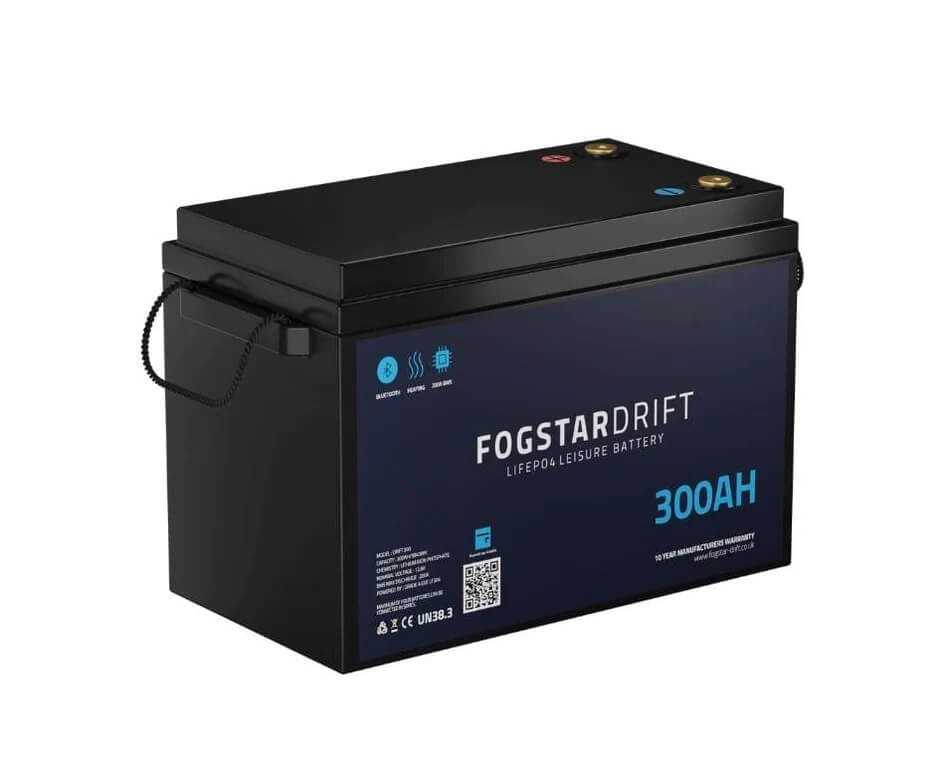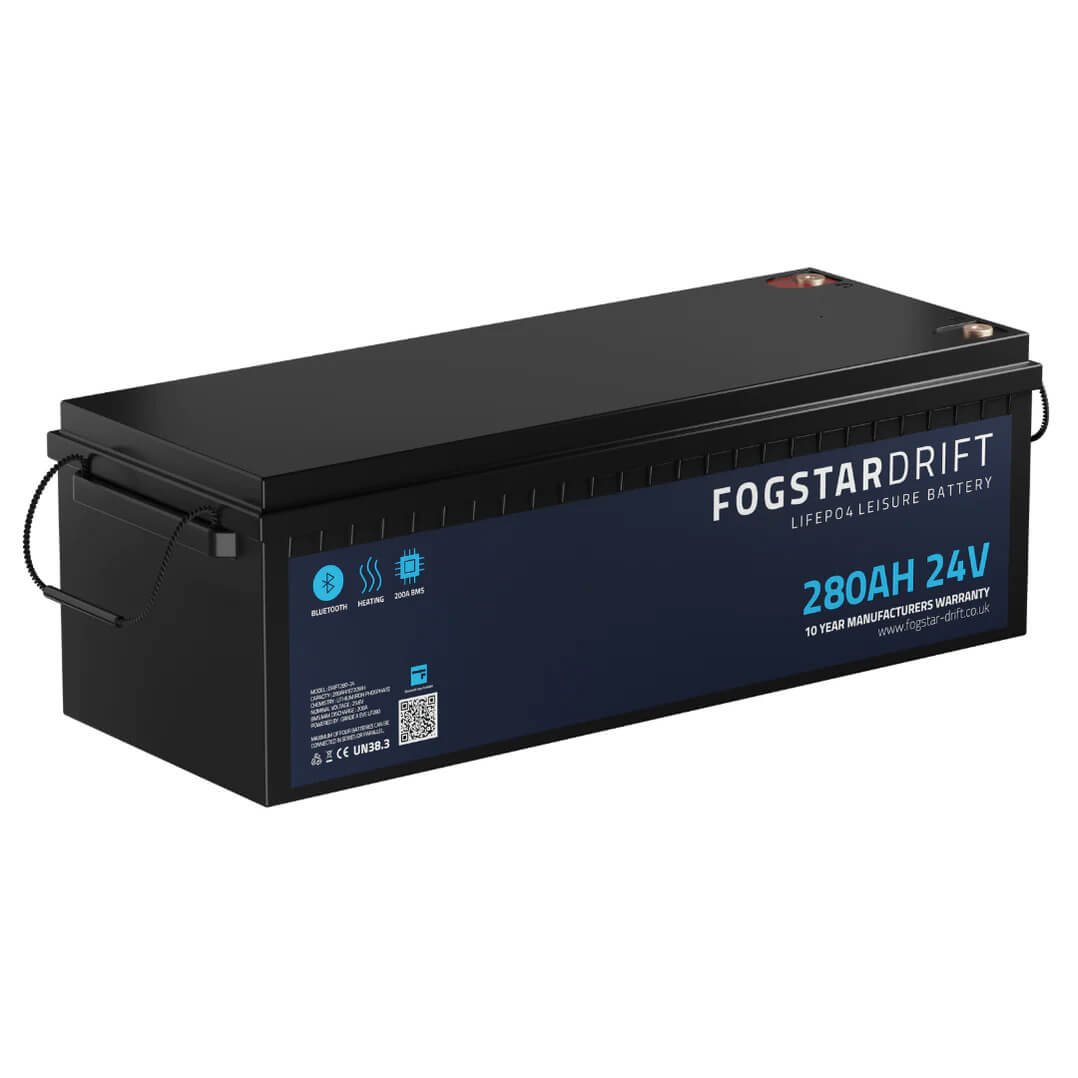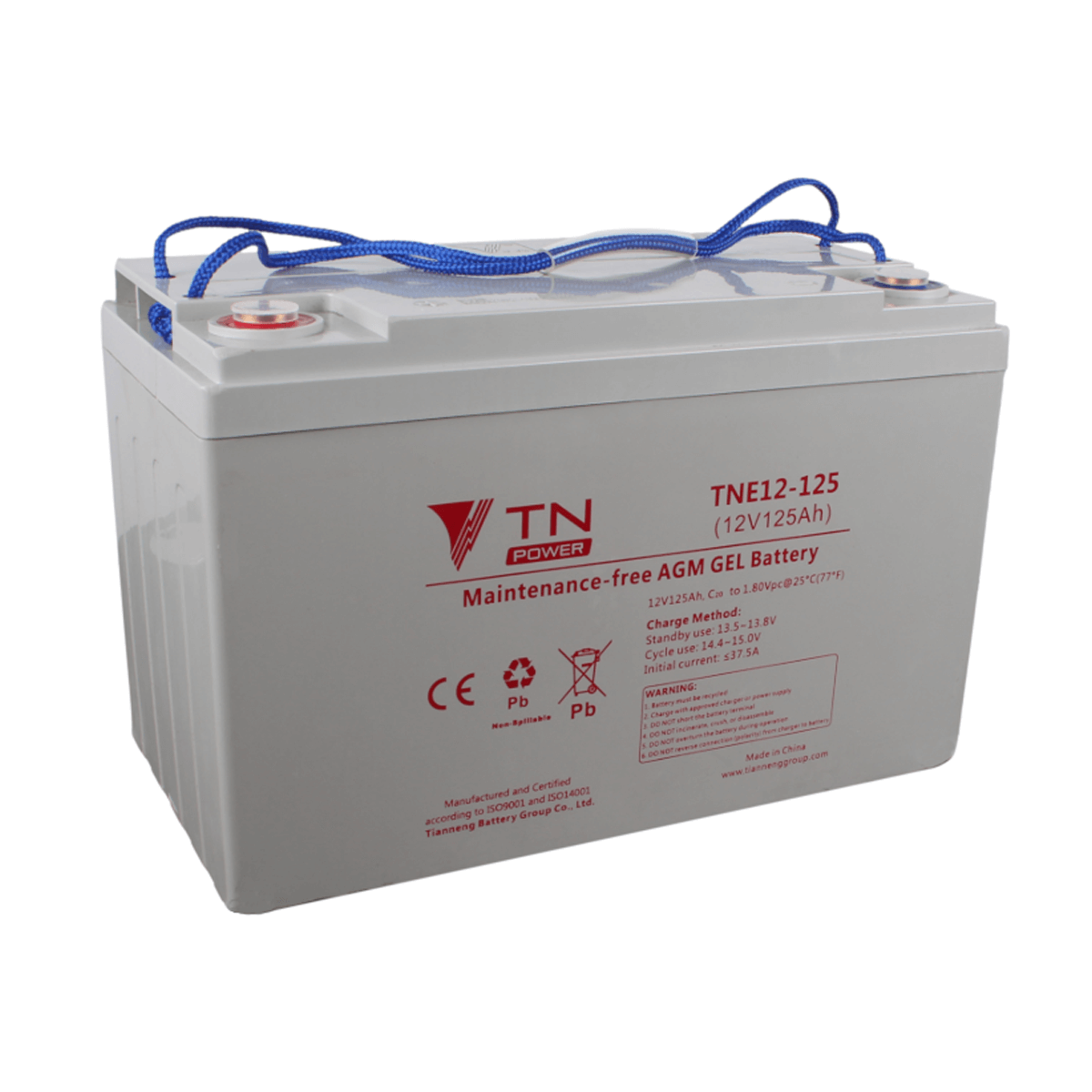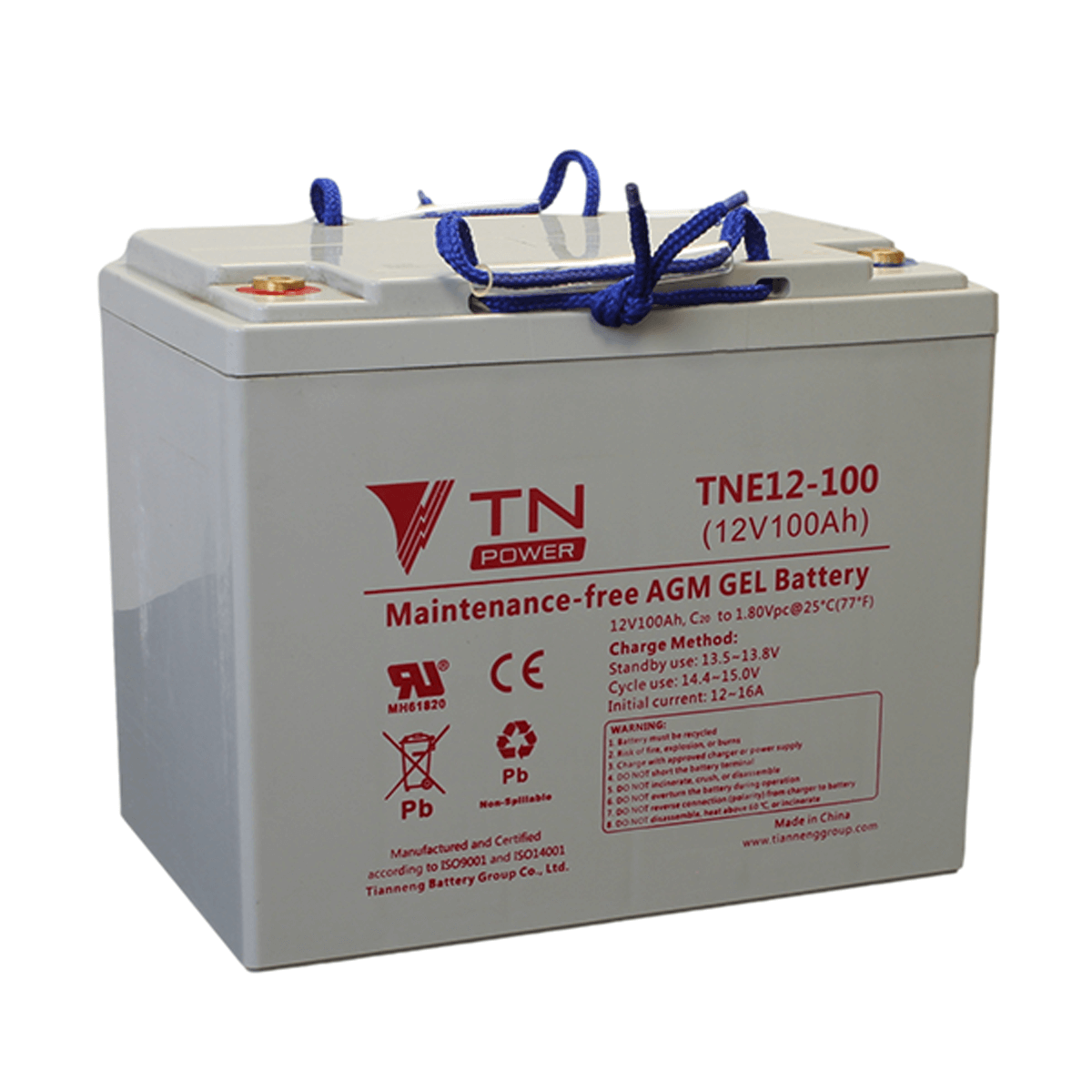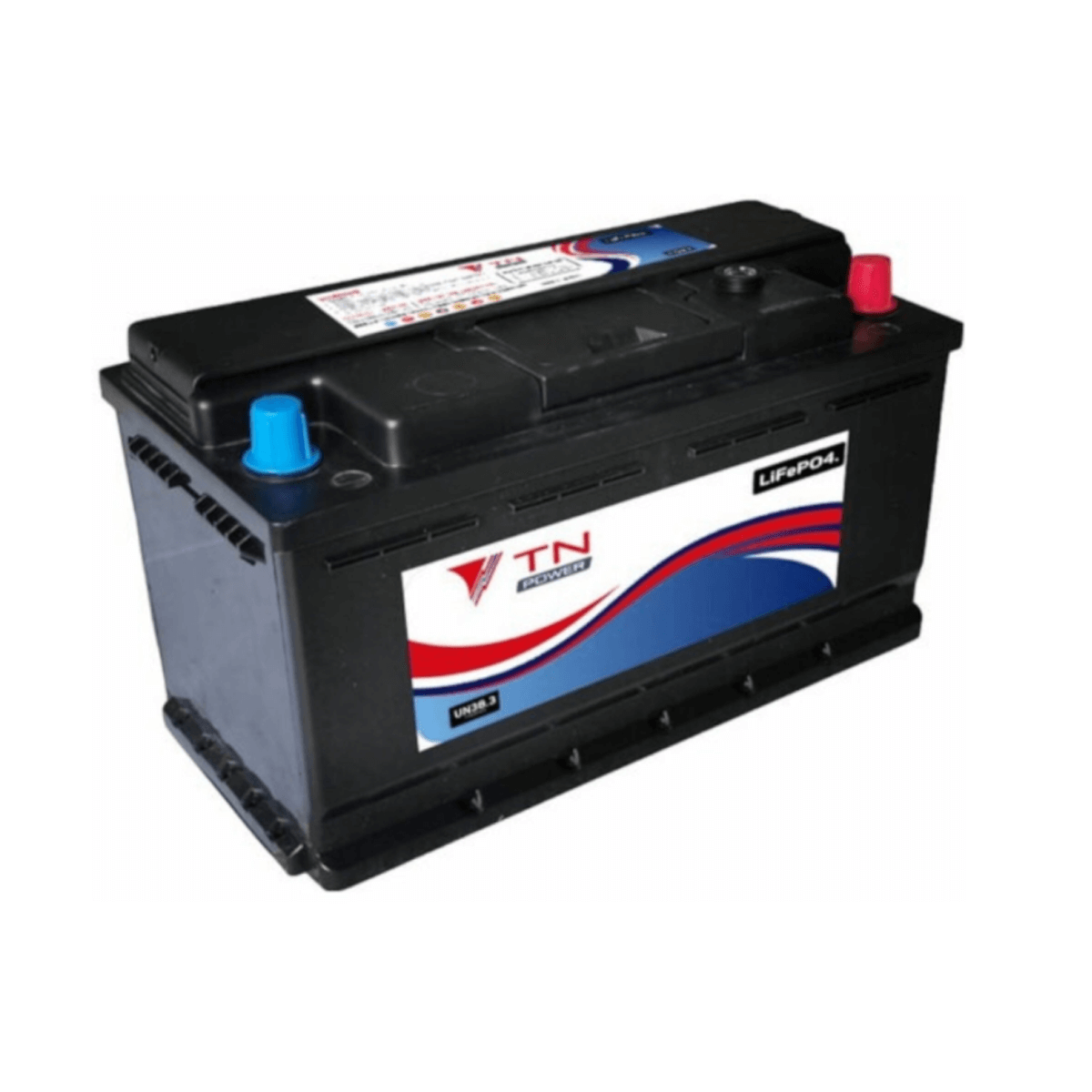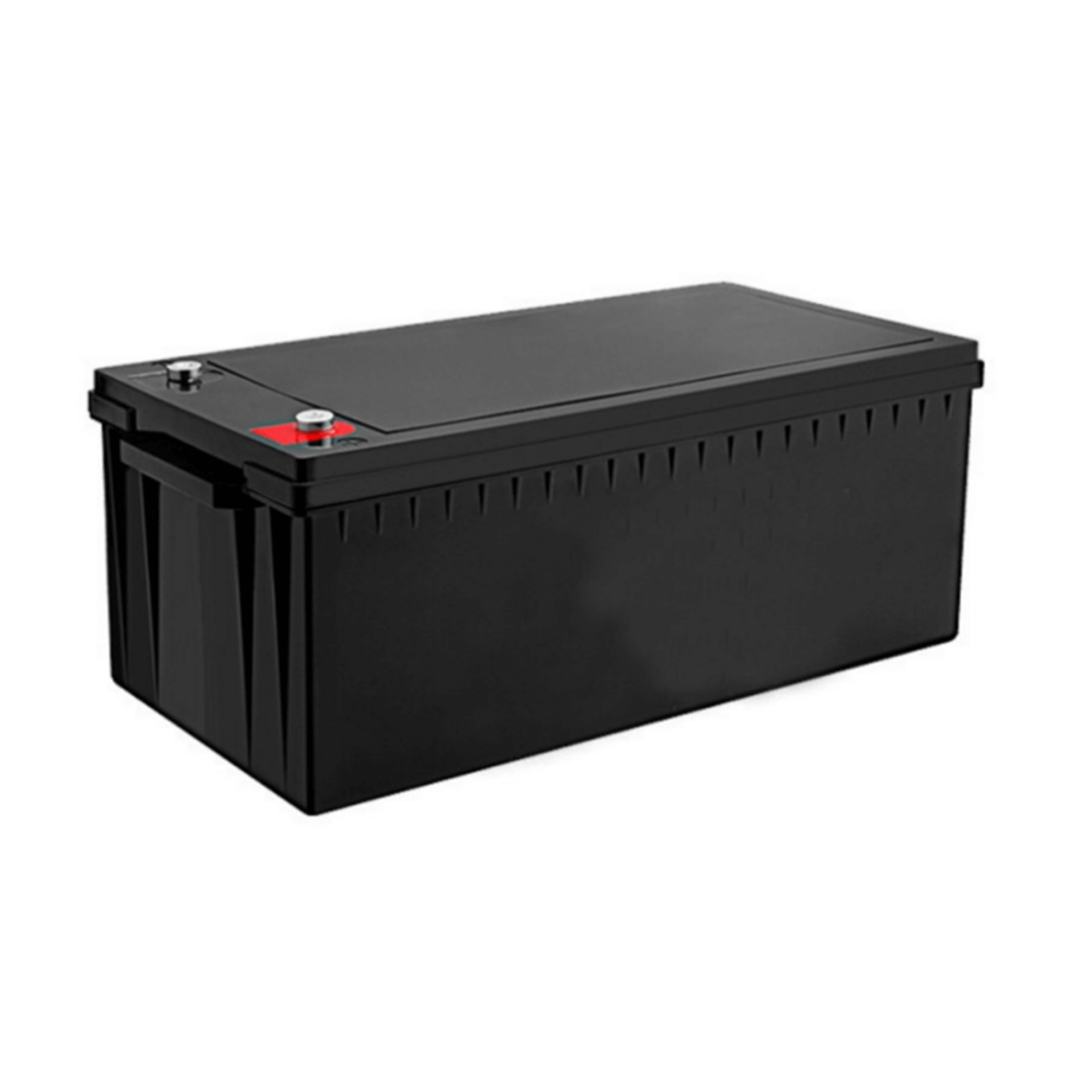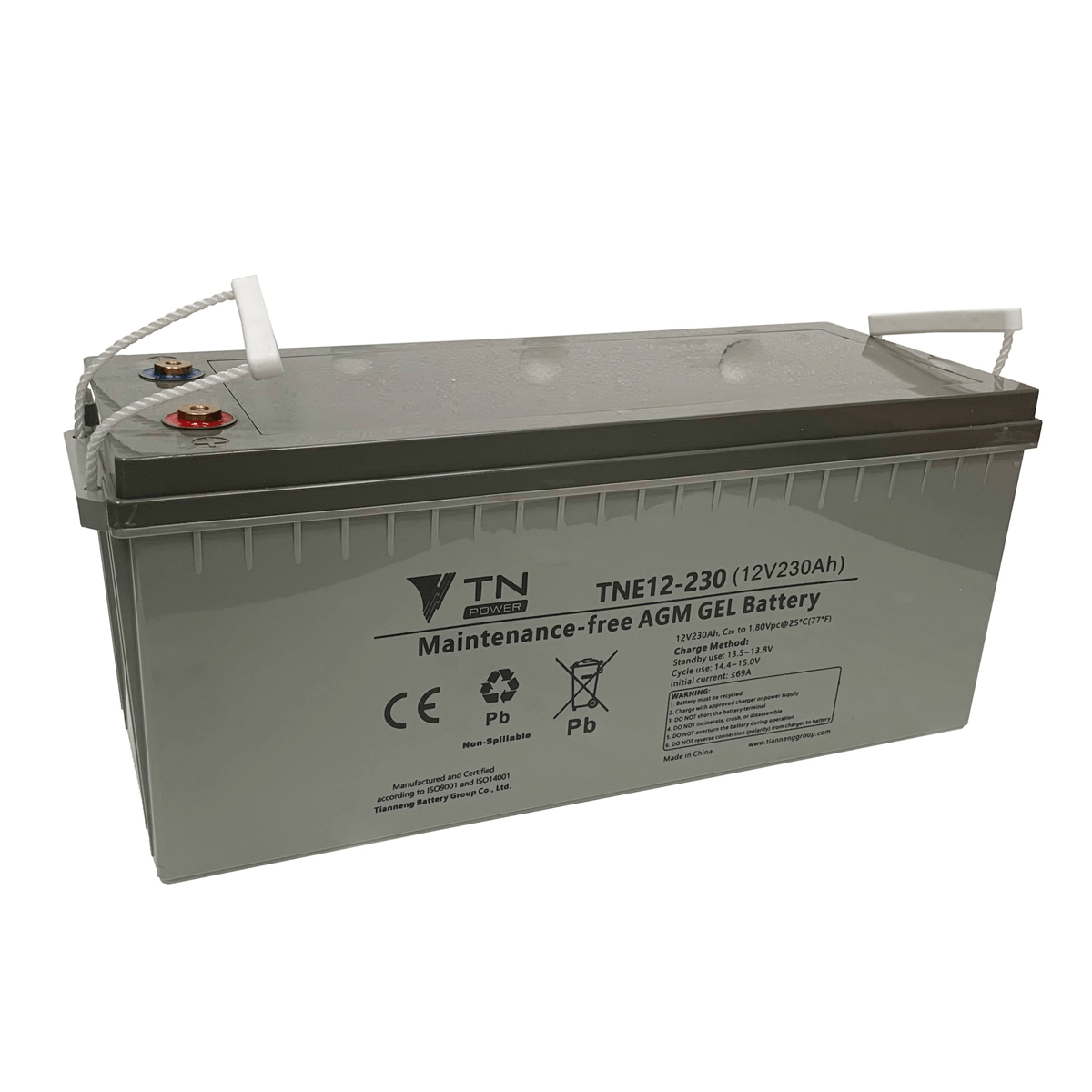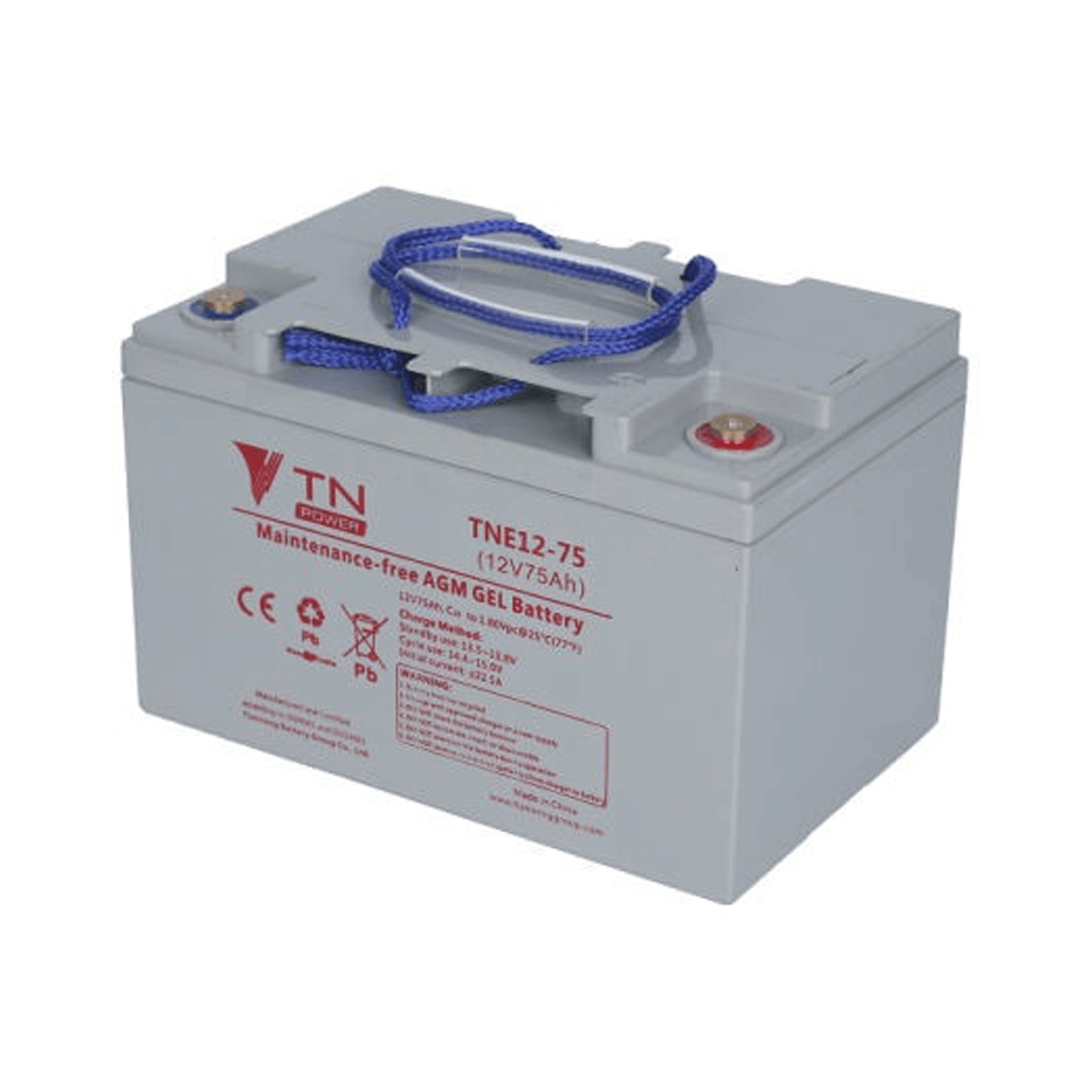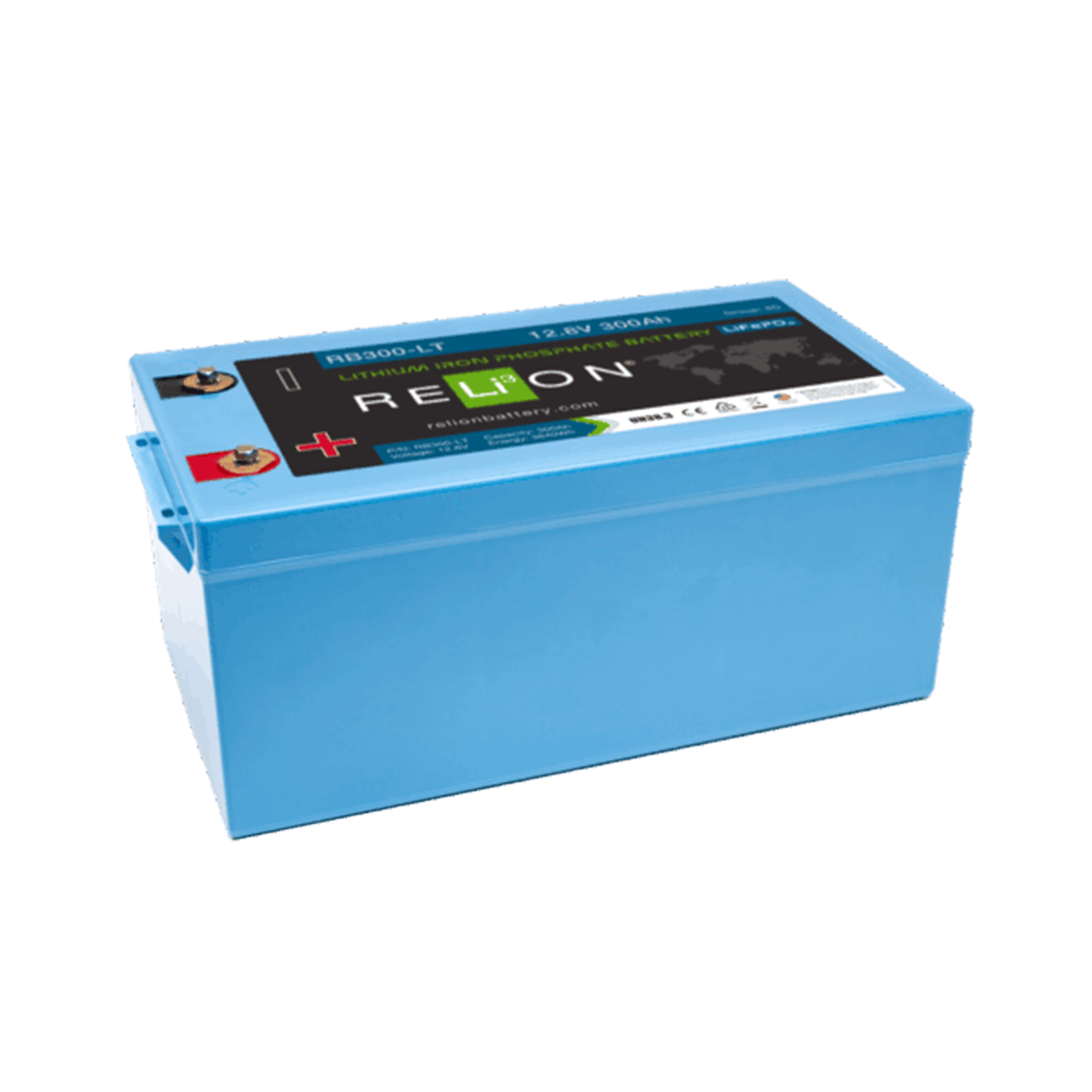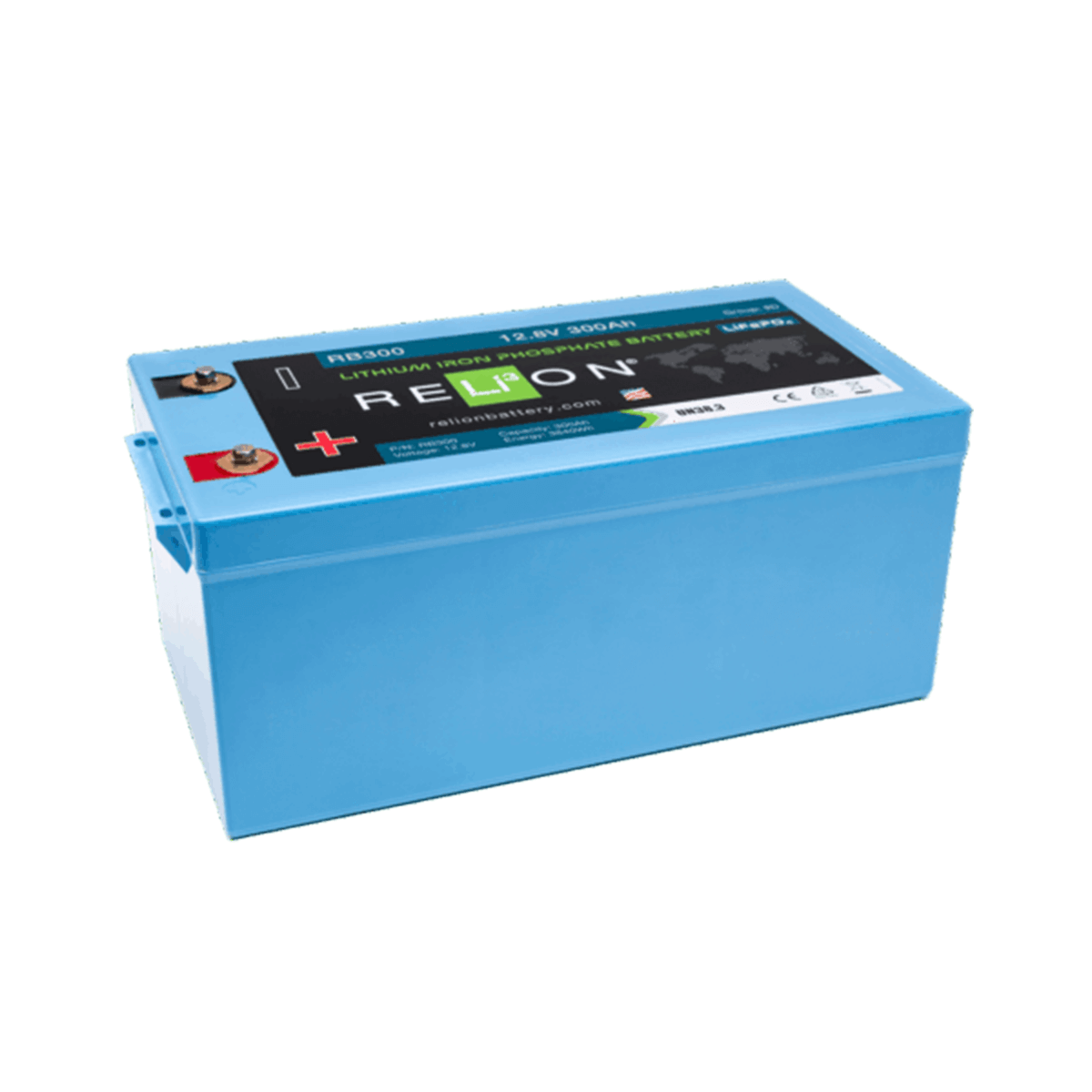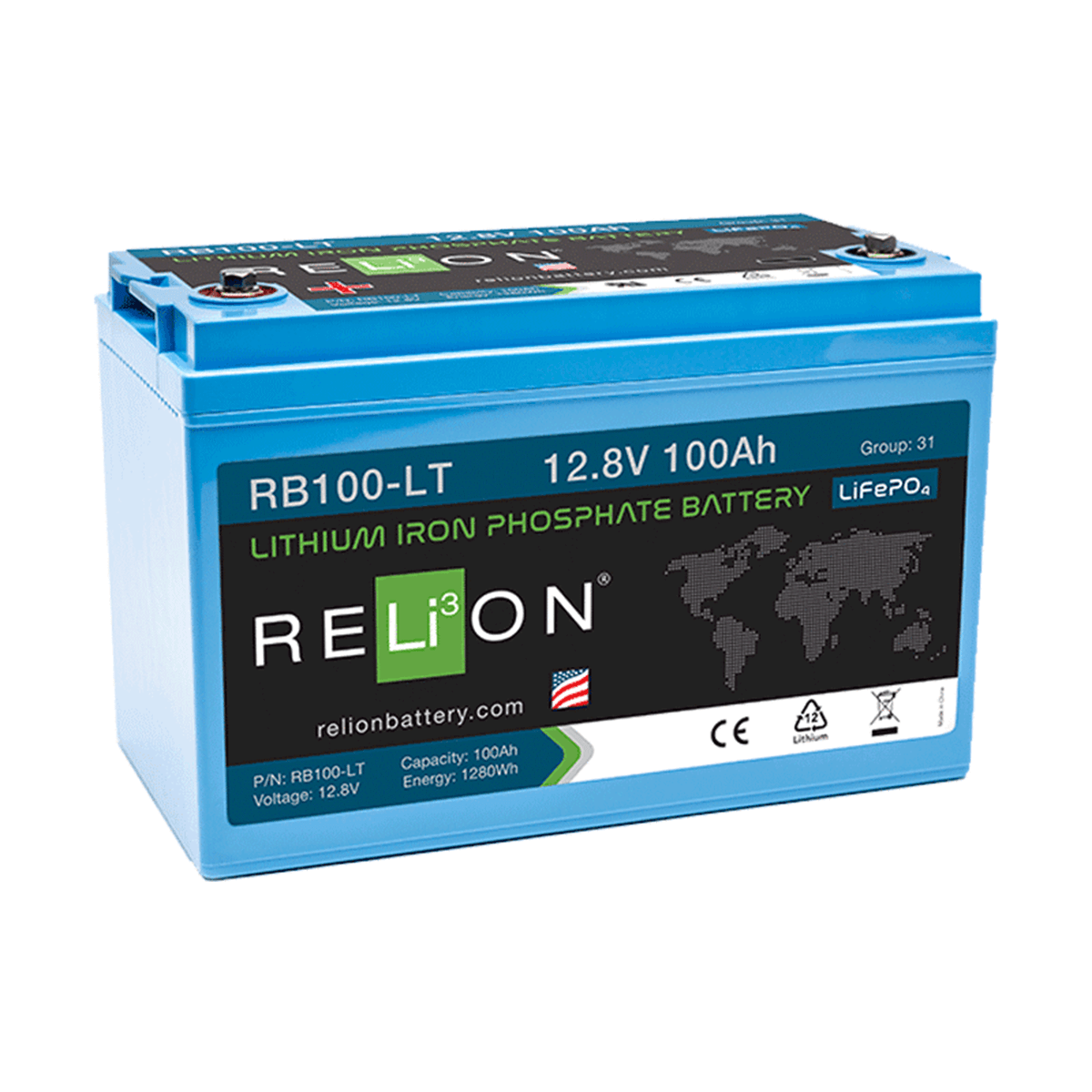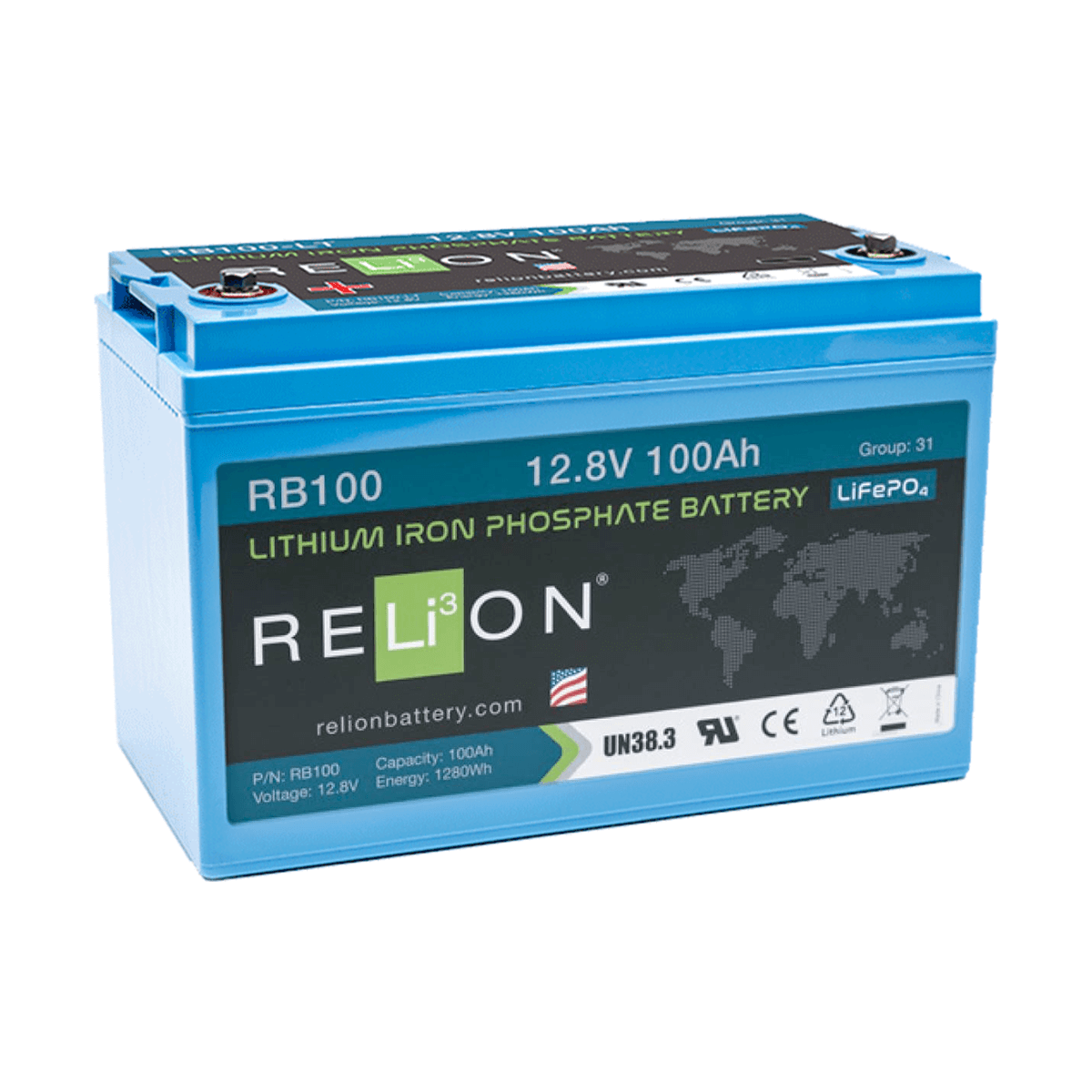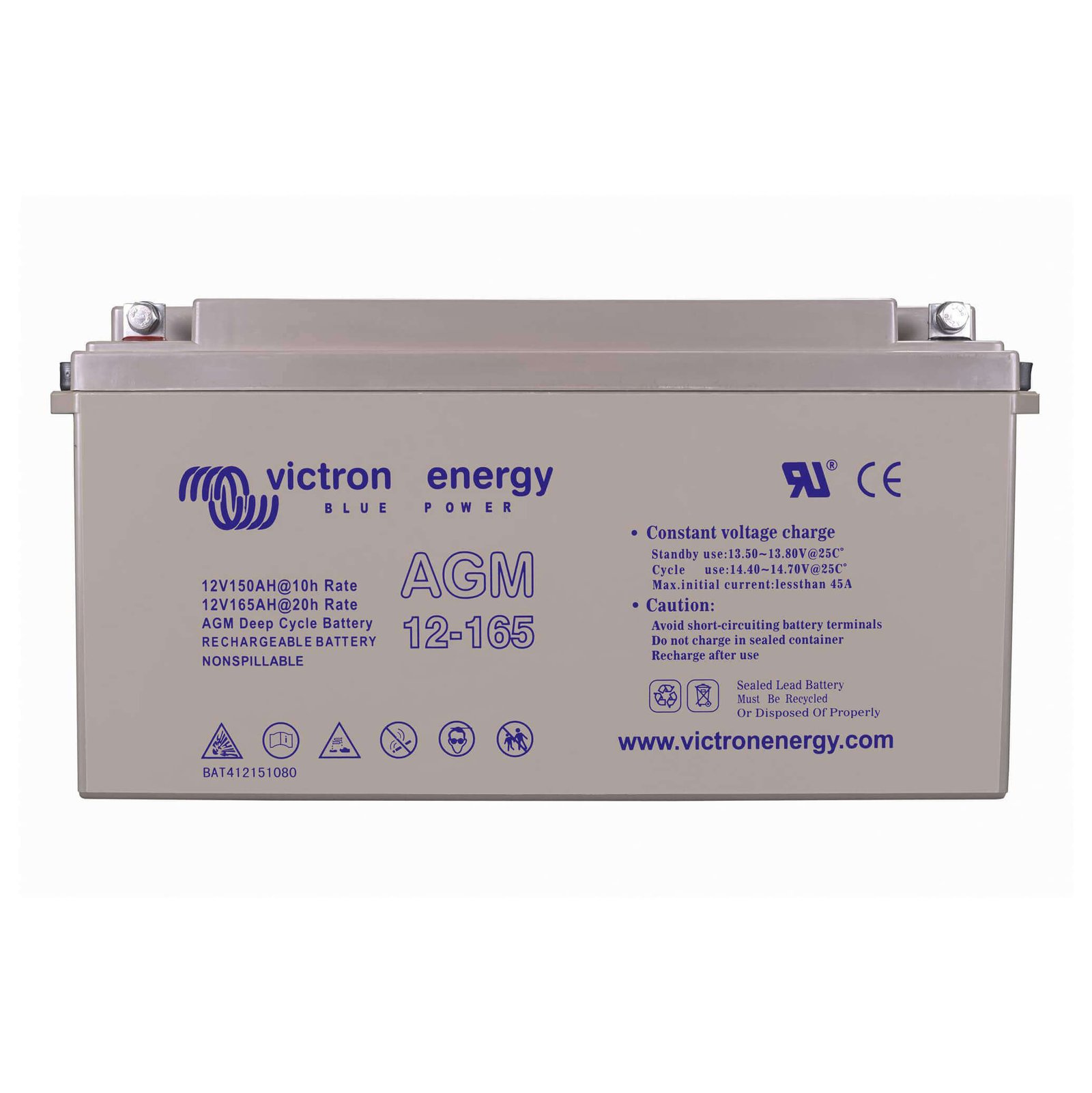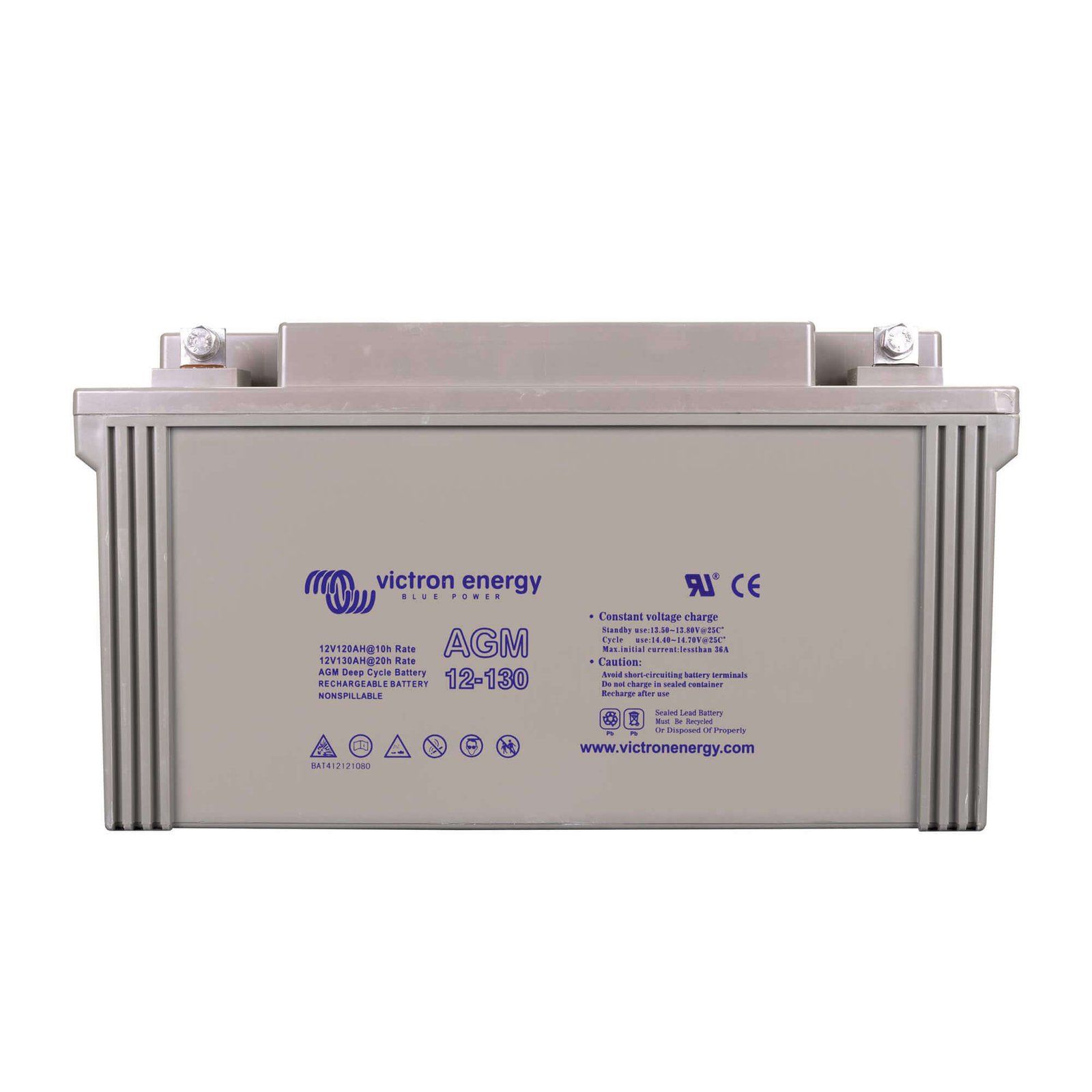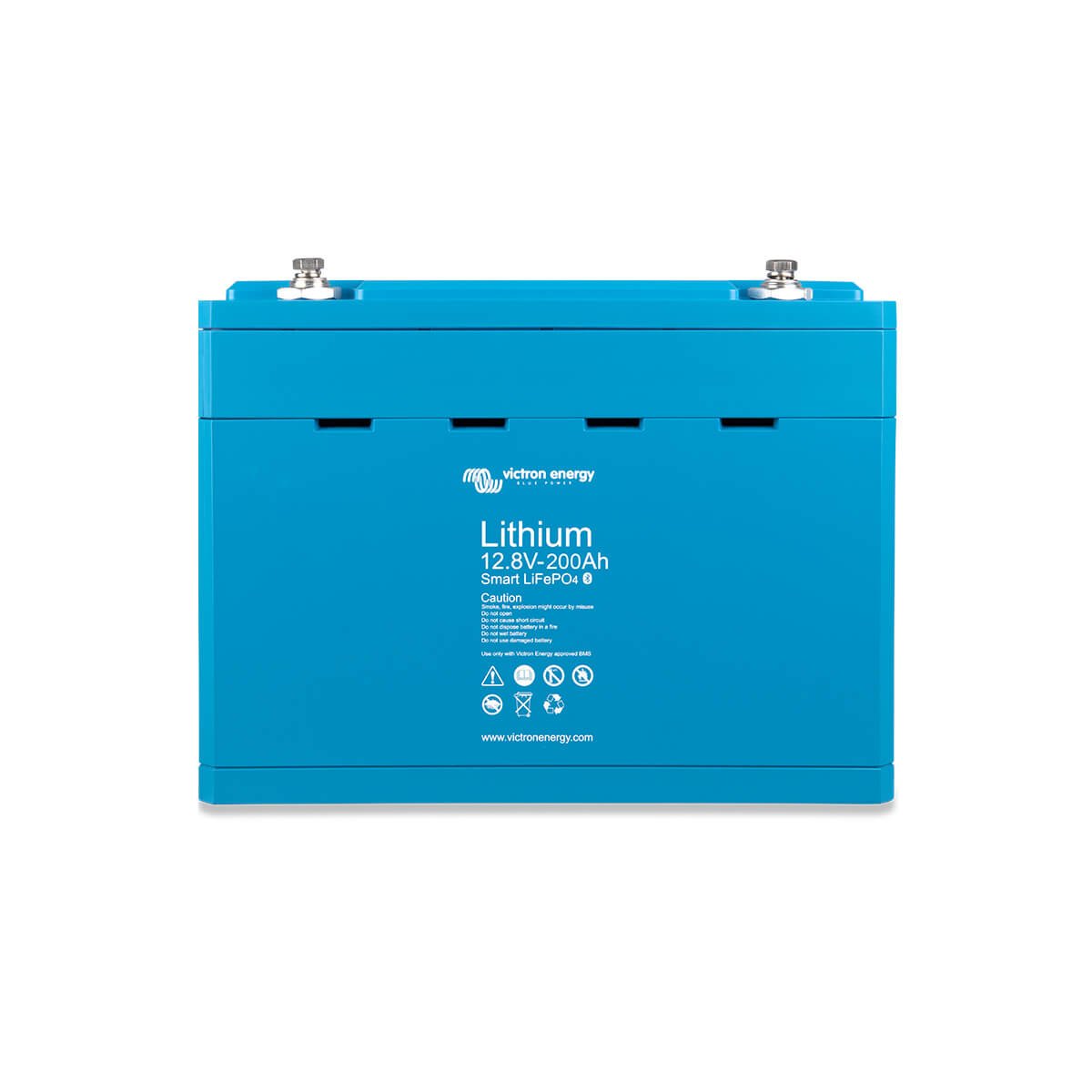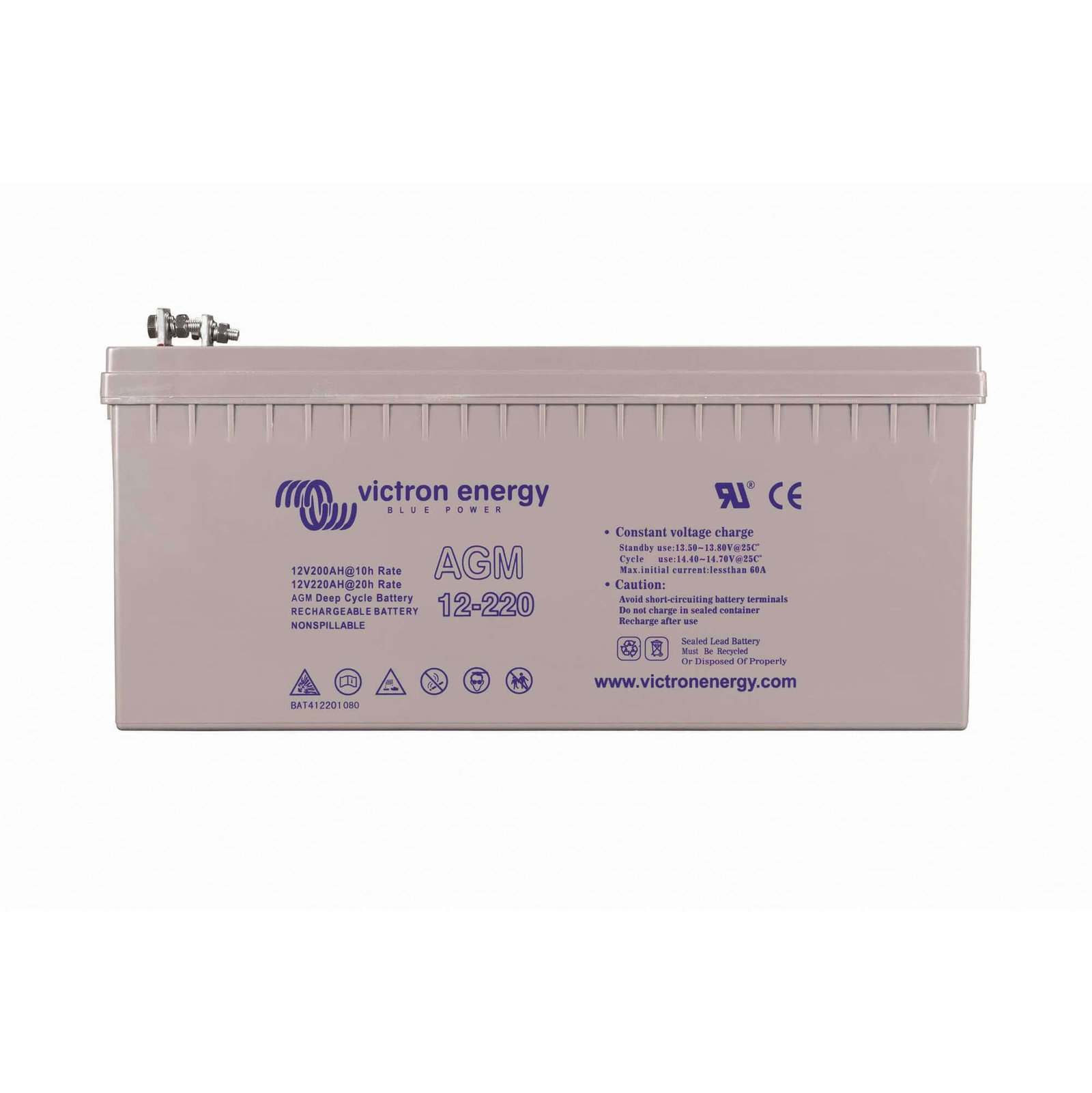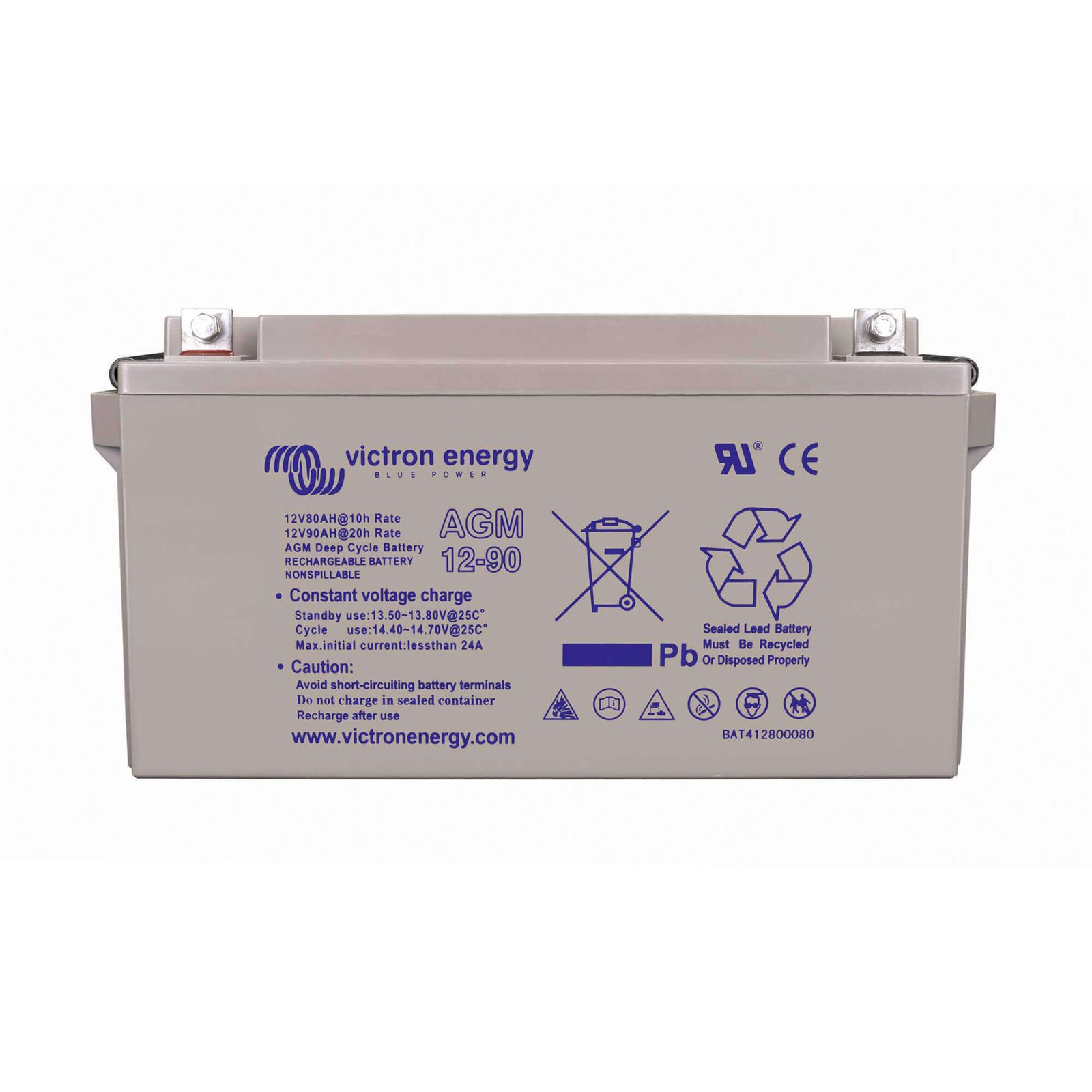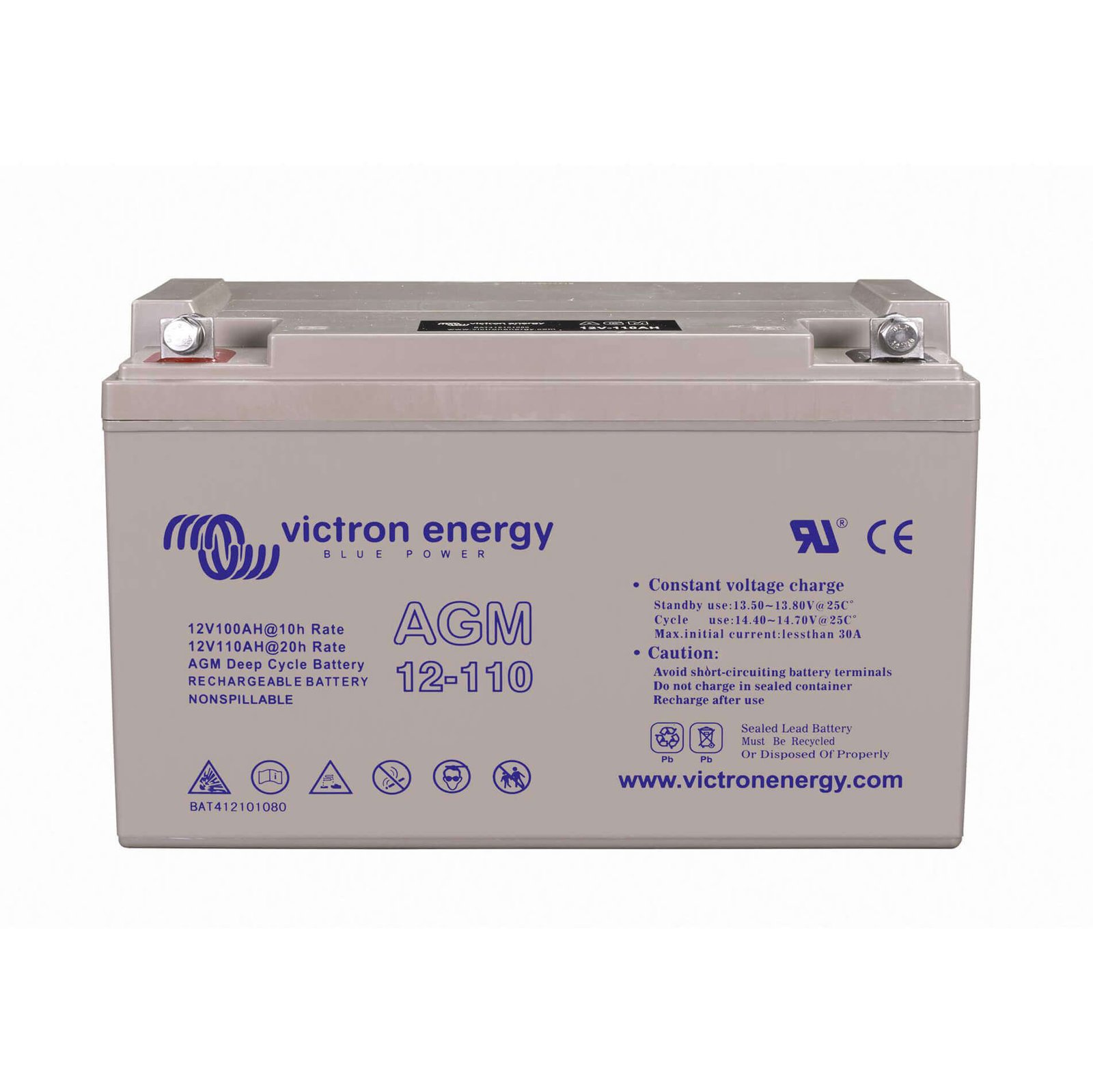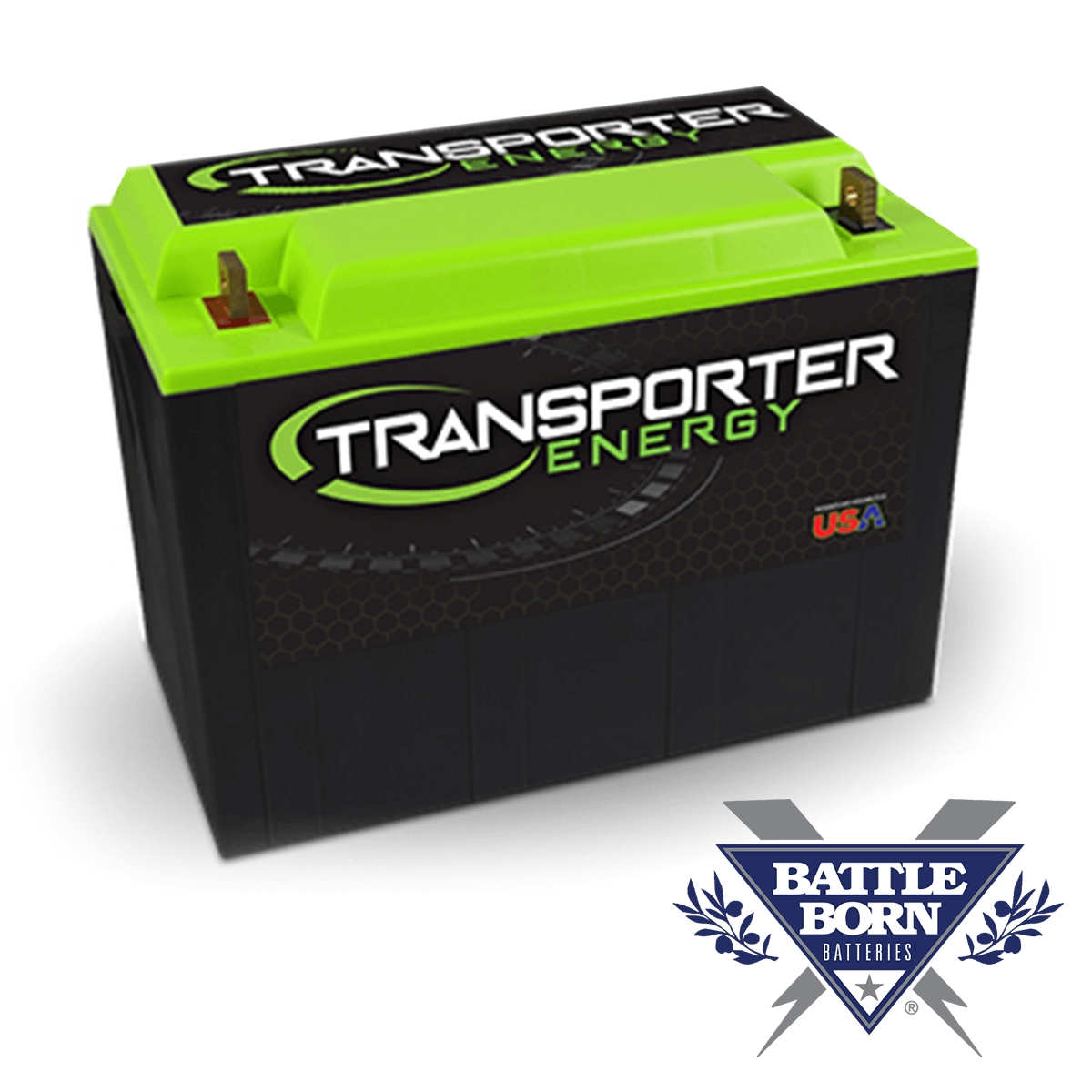Campervan leisure batteries
What is a campervan leisure battery?
A leisure battery stores the power required to run your campervan electrical system. There are two types of battery in a camper. The vehicle’s starter battery gives a short burst of energy to ‘crank’ and start your van’s engine each time you drive. Conversely, a leisure battery provides a steady level of power over a prolonged time for your 12V (and often 230V) appliances. Electric vans also contain a third battery – a traction battery – to power their motors. We won’t cover these in this page, but you can take a look at our article on electric campervans if you want to find out more about them.
Your campervan leisure batteries will likely be one of the most expensive single items within your van build. It can feel like there’s an overwhelming number of options to choose from. And, it’s easy to end up spending much longer than you need, sifting through confusing information online. However, this page aims to cut through the noise and help you identify the exact size and type of battery you need for your electrical system.

How does a battery work?
Batteries allow us to store electrical energy as chemical potential energy. When we need power, a chemical reaction can release this energy as electricity. In every battery, there are positive and negative electrodes (cathodes and anodes) and an electrolyte. When we attach a load to a battery, the electrodes start to react with the electrolyte. Then, positive ions move through this electrolyte from the anode to the cathode. These ions are molecules or atoms with missing electrons. In the process, they leave spare or ‘free’ electrons at the anode. To equalise the charge between the electrodes, the free electrons travel to the cathode through the attached load, powering it.
When all the material in the electrodes has reacted and changed into another material, the reaction stops, and the battery is flat. Applying power to a rechargeable battery reverses this process, and charges it.
How does a leisure battery work?
Campervan leisure batteries store the charge that you use to power your electrical system. They use either a lead-acid or lithium-ion construction. Starter batteries have many thin plate electrodes with a large total surface area. Consequently, this allows them to release a large amount of energy in a very short space of time. In contrast, leisure batteries have fewer, thicker plates as electrodes, with a smaller total surface area. This allows them to deliver a steady current over a prolonged period and cope with the deep discharge required of a campervan leisure battery.
What is a lead-acid battery?
Lead-acid batteries contain cathodes made of lead oxide, anodes made of a lead sponge, and a sulfuric acid electrolyte. When discharging, sulfate ions in the sulfuric acid react with the electrodes. This leaves lead sulfate crystals and free electrons on the anode and lead sulfate crystals and water on the cathode.
There are a few different types of lead-acid leisure battery available. Flooded lead-acid batteries have a liquid electrolyte, whereas AGM and gel batteries use different methods to contain the electrolyte in a more solid state. This both prolongs the life of the battery and makes it easier to mount and maintain. We’ll explain more about each type of lead-acid battery shortly.
What is a lithium-ion battery?
In a more recent innovation, manufactures have started manufacturing lithium leisure batteries. In many ways, lithium-ion batteries are superior to lead-acid, as they are far lighter and have a much longer lifespan. Their low weight is thanks to a few of lithium’s properties. Firstly, it is the lightest metal. Secondly, it has the highest electrochemical potential of all the metals. This means there is a lot of energy released when it loses an electron. These factors combined means that it has the highest energy potential to weight ratio. As a result, lithium batteries can be far lighter than any alternative battery with the same capacity.
Lithium Iron Phosphate (LiFePO4) is the type of lithium-ion battery used in off-grid electrical systems. This is because they have a longer lifespan and are safer than other lithium-ion batteries. These batteries contain a LiFePO4 cathode and a graphite anode, wrapped around each other. Between them is a separator soaked in a lithium salt electrolyte. When charging, the battery absorbs electrons, and lithium ions move from the cathode to the anode. When discharging, the opposite occurs and the battery releases electrons.
Ready-to-go battery kits Designed by experts 🔧
Our kits are designed by engineers to be safe and robust. Plus – when you purchase, we’ll send you a free wiring diagram and installation guide.
Shop nowWhat is the best type of campervan leisure battery?
Flooded lead-acid leisure battery
For a long time in the caravan and boat world, the flooded lead-acid (FLA) battery was the most common type of leisure battery. These are sometimes referred to as a ‘wet’ lead-acid battery. They are flooded with a liquid electrolyte, which means that you need to mount them upright.
Sealed wet lead-acid batteries are now more common, and are often referred to as maintenance-free flooded lead-acid. Unlike traditional FLA, they are completely sealed. As a result, you don’t need to top them up and there is no risk of spillage, so you can mount them at any angle.
Gel leisure battery
Gel leisure batteries use a thick paste which contains the electrolyte. For this reason, you can mount them in any orientation and don’t need to maintain them. Additionally, they are less sensitive to being deeply discharged. Whereas you should only discharge flooded batteries to 50%, gel batteries can be ‘deeply discharged’ up to 80%. However, they perform best when only discharged to 50%.
In hot weather applications, gel batteries perform the best, but you need to charge them in a very specific manner. Additionally, they are extremely sensitive to overcharging, meaning that it’s easy to cause irreparable damage.
Shop gel batteriesAGM leisure battery
Absorbent glass mat (AGM) batteries are a popular choice of leisure battery. They have a thin fibreglass mat containing the electrolyte. So, you can mount them on their side, and don’t need to maintain them. AGM leisure batteries are pricier than flooded lead-acid batteries, but they are also more sensitive to overcharging. However, like gel batteries, they have a longer lifespan and can be deeply discharged.
It’s easy to perceive AGM and gel leisure batteries as very similar. But, AGM batteries currently outsell gel batteries at a rate of 100:1, as they are much less sensitive to overcharging. Out of all the lead-acid options, AGM are the best leisure batteries for campervans.
Shop AGM batteriesLithium leisure battery
Lithium leisure batteries have a much longer lifespan than any other battery on the market. Additionally, they can be very deeply discharged. So, when compared to lead-acid, you don’t need as large a battery bank to access the same power usage.
It’s possible to discharge a lithium leisure battery by 100% without damaging it. They also weigh less than half of a lead-acid leisure battery with the same power capacity, and they’re much smaller. However, they come with an extremely high upfront cost. Furthermore, lithium leisure batteries do not perform well in cold climates, as they cannot charge when below zero degrees. Luckily, heated varieties are available.
Shop lithium batteriesAGM vs lithiumin campervans
So, which type of battery should you pick for your campervan electrical system? The two most common choices are AGM and lithium.
AGM batteries are the best value lead-acid batteries. Accordingly, they are the sensible choice for a lot of low to mid-spec systems. They have a long lifespan, can discharge deeply and can be used in cold weather. But, they’re really heavy, so if you require a large battery bank, it may be good to consider lithium.
Lithium batteries are smaller, much lighter, and last far longer than AGM batteries. But they are more than three times as expensive for the same usable capacity.
Because of their long life span and low weight, lithium batteries are a practical option for high-spec electrical systems requiring a large battery bank. However, depending on your system needs, either can be a great option.
AGM leisure batteries
Lithium leisure batteries
When designing our Nohma electrical systems, we spec AGM batteries for:
- Full-time van lifers with low to medium usage. This is typically anyone requiring 240Ah usable capacity or less. For anyone using their van full-time, we recommend a 60% discharge to prolong the battery lifespan. So, 240Ah usable capacity would equal a 400Ah AGM battery bank.
- Those using their van for holidays and longer trips. With this usage, it’s fine to regularly discharge your batteries by 80%. This can give you a higher usable capacity (~320Ah) from the same 400Ah battery bank.
If you need an AGM battery bank larger than 400Ah, you risk breaking the weight limit for a van conversion! Therefore, we recommend lithium batteries for anyone who has a higher usage than mentioned above. Or, for anyone who is tight on size and weight restrictions and has the budget for them. There is more to consider before choosing your battery type, including the total cost per watt hour over your batteries’ life. Check out our article on lithium batteries if you want to read about this, plus more on AGM vs lithium leisure batteries.
Do I need 12V or 24V batteries for my campervan?
The leisure battery voltage needed in your campervan electrical system depends on your power usage. Watts law, P = I x V, tells us that with a higher voltage, you require less current to deliver the same power. If you have a high-power system that, for example, includes a 3000W+ inverter, you will need lots of high gauge cable. You can save some money by going for a 24V battery bank and reducing your cable gauges. However, there are other considerations to keep in mind, such as voltage converters for powering 12V electrics. Our article on 12V, 24V and 48V electrical systems covers all the considerations you need to make when choosing your system voltage.
How long does a leisure battery last?
The lifespan of a campervan leisure battery depends on several factors:
- The type of leisure battery
- The quality of the battery
- How deeply you discharge the battery
While flooded lead-acid leisure batteries can be irreparably damaged if you discharge them below 50%, you can discharge AGM and gel leisure batteries by 80% without harming them, and lithium batteries by almost 100%. However, discharging a leisure battery less prolongs its lifespan.
This graph shows how the cycle life of TN Power lithium and TN Power AGM batteries depends on how deeply you discharge them.
How to size your leisure batteries
You should consider a number of factors when sizing leisure batteries for a campervan:
- Your power usage (i.e. what appliances will you be using)
- How often you will use your campervan (i.e. occasional holidays or full-time van life)
- Your budget (i.e. if you can afford to pay a premium for lithium batteries)
These factors can help you establish what type of leisure battery to go for and the total amp hours you will need. Follow the steps below to work out exactly what size and how many leisure batteries you will need for your campervan.
 Work out your power requirements
Work out your power requirements
To work out what size batteries you need, you should first work out your daily power usage in Ah. Note down a list of all your appliances you want in your campervan. Here is the rough power usage of some common appliances, but for a more specific figure, it’s best to either look online or for a label on the product itself.
Power usage of appliances (watts)
10
Phone charger
50
Radio
100
Laptop
200
Games console
500
Blender
700
Toaster
1000
Microwave
2000
Hairdryer
3000
Kettle
Next, divide the wattage by your system voltage (i.e. 12V, 24V) to find each appliance’s current usage.
Current (Amps) = Power (Watts) / Voltage (Volts)
Multiply this by the hours you’ll use them each day to find a daily amp hour (Ah) usage for each appliance. Then, total these up to find your total amp hour usage per day.
Current (Amps) × Usage (hrs) = Amp Hours per Day (Ah/day)
This handy table below shows how we calculated the power usage for an example electrical system.
🔌 Example daily usage
| Appliances | Qty | W | Ah | Usage (hrs) | Ah / day |
|---|---|---|---|---|---|
| Fridge | 1 | 11 | 1 | 12 | 11 |
| Laptop charger | 2 | 61 | 5 | 2 | 10 |
| Phone charger | 2 | 10 | 0.8 | 7 | 6 |
| Camera charger | 1 | 53 | 4 | 2 | 9 |
| Speaker | 1 | 20 | 2 | 1 | 1 |
| Spotlights | 10 | 8 | 1 | 8 | 5 |
| Fairy lights | 1 | 3 | 0.3 | 8 | 2 |
| Total | 44 | ||||
 Work out how often you will charge your batteries
Work out how often you will charge your batteries
You now need to consider how you will charge your batteries, and therefore how long your batteries need to last between charges. If you’re looking mainly to spend your time on a campsite, then you may only need to go for a day or two between charges. Alternatively, if you’re looking to spend time off grid and mainly use solar, three to four days is more sensible. This allows for rainy days when you’re not driving, and you aren’t getting any power from your solar panels or battery to battery charger.
Using our example of 44Ah/day and allowing for three days between a charge, can find our required usable capacity.
44Ah/day × 3 days = 122Ah of usable capacity
 Account for your batteries’ usable capacity
Account for your batteries’ usable capacity
Remember, you will damage a battery if you use its entire capacity. So, divide your required usable capacity by the amount that you can discharge your specific battery type, to find the battery bank size you need.
🔌 Example daily usage
| Flooded lead acid | AGM & Gel | Lithium | |
|---|---|---|---|
| Usable capacity | 50% | 80% | 95% |
| Divide by | 0.5 | 0.8 | 0.95 |
If you will only use your van for holidays and trips, discharging AGM and gel by 80% and lithium by 95% is fine. However, if you will be using your van for full-time van life, it’s much better to discharge AGM and gel by 60% and lithium by 80% to prolong their lifespan. Say in our example we have AGM batteries and are going to discharge them by 60%. Dividing our required usable capacity by how much we can discharge the batteries gives us the size of the battery bank we need.
122Ah / 0.6 = 203Ah battery bank
The final step is to find a combination of batteries that total this capacity.
In our example, two 100Ah TN Power AGM batteries would be perfect. You can connect them up in parallel and add their capacities together to give the total battery bank capacity.
If you don’t feel confident working out what batteries to buy, we can do the hard work for you! In our electrical system survey, 82.5% of people failed to correctly size their battery capacity. Nohma employs scientists and engineers who, alongside our clever algorithm, design thousands of bespoke electrical systems each year for a broad range of applications. We can design your electrical system and ship it to you for no extra cost than the components themselves!
Campervan electrics leaving you confused?

What is the best campervan leisure battery brand?
There are plenty of brands selling AGM and lithium batteries online, with varying reputations for reliability and quality. It can be difficult to decide which brand to go for. To help you out, we only stock batteries that we’d put in our own vans. Let’s have a look at which brand makes the best leisure battery for a campervan.
The tables below compare each brand of battery we sell. We look at the price per amp hour, cycle life and warranty, as well as how many batteries you can connect in series and parallel. Remember, connecting in series increases the total voltage, whilst connecting in parallel increases the capacity.
Lithium batteries compared
| Brand | Price / Ah (12V) | Cycle Life (80% DoD) | Warranty / Years | No. Series Connections | No. Parallel Connections |
|---|---|---|---|---|---|
| Fogstar | £3.39 | 4500 | 10 | 4 | 4 |
| Victron | £12.98 | 2500 | 3 | 4 | 4 |
| TN Power | £7.45 | 3500 | 5 | 4 | 2 |
| Transporter Energy | £11.89 | 5000 | 10 | 4 | Unlimited |
| RELiON | £9.49 | 7000 | 10 | 4 | 4 |
| Eco Tree | £6.99 | 3500 | 6 | 4 | 2 |
AGM batteries compared
| Brand | Price / Ah (12V) | Cycle Life (60% DoD) | Warranty / Years | No. Series Connections | No. Parallel Connections |
|---|---|---|---|---|---|
| Victron | £3.16 | 700 | 2 | Unlimited | Unlimited |
| TN Power | £1.83 | 900 | 2 | Unlimited | Unlimited |
Fogstar lithium batteries
Fogstar are our number 1 choice for lithium batteries. They provide the best balance of cost and performance, and come with a 10 year warranty. Plus, all Fogstar batteries come with an integrated battery monitor, so you don’t need to purchase a separate monitor.
TN Power AGM and lithium batteries
Overall, we find that TN Power offer the best value leisure batteries for AGM. Their relatively low price makes lithium more accessible, and the five-year warranty is more than adequate for many. Their high-quality, low-cost AGM batteries are also a no-brainer if lithium isn’t right for you.
RELiON lithium batteries
For a more premium option, RELiON is the clear winner. At 7,000 cycles, even if you managed to drain them every day, they’d last for 20 years! If you’re looking to live in your van long term, this increased life and warranty makes them the most cost-effective option in the long run. Plus, like us, they’re also members of 1% for the Planet.
Victron Energy AGM, Gel and lithium batteries
For most electrical system components, Victron is the clear winner, however, when it comes to batteries, the high price tag doesn’t seem worth the relatively low cycle life and warranty. Moreover, unlike the other brands, Victron’s smart lithium batteries do not include a battery management system. So, you will need to purchase one separately. Their SuperPack range do include a BMS, but have a low maximum discharge current. So, they’re often not a great choice. Despite this, the Victron batteries are still high-quality products. So, for those who want to stick with the Victron ecosystem and like the smart features, they’re a solid choice.
Transporter Energy lithium batteries
Transporter Energy are the UK branded, American ‘Battle Born Batteries’. They have a fantastic reputation for quality and reliability, but do come at a premium! One of their selling points is that you can connect as many batteries in parallel as you like. Therefore, for super high-spec systems with massive battery banks, Transporter Energy may be a practical option.
Read our leisure battery articles 🔋
Need help with the rest of your electrical system?
Our electrical system guidebook pages cover everything you need to know about your campervan electrical system ⚡



